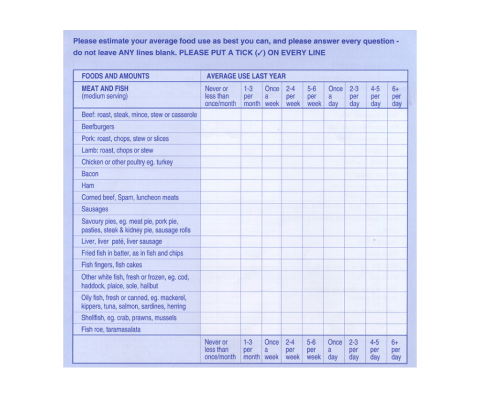As a personal trainer, one of the key areas you will focus on is helping your clients achieve their health and fitness goals through exercise and nutrition.
Personal trainers should have a basic understanding of dietary analysis to help their clients achieve their fitness goals safely and effectively. While providing personalised nutritional advice may be outside the scope of a personal trainer's practice, understanding basic nutrition principles and assessing a client's current diet can still be helpful.
For example, a personal trainer may need to understand how macronutrients (such as carbohydrates, protein, and fat) and micronutrients (such as vitamins and minerals) affect energy levels, muscle recovery, and overall health. You may also need to understand how to assess a client's diet to identify potential deficiencies or excesses.
By having a basic understanding of dietary analysis, personal trainers can make informed recommendations to their clients regarding nutrition, such as suggesting healthier food choices or identifying areas where clients may need to adjust their diets to support their fitness goals. This knowledge will also help you to work collaboratively with Dietitians and Registered Nutritionists to provide more comprehensive care to your clients.
By understanding the principles of dietary analysis, you will be able to provide your clients with the general guidance to make healthier food choices, optimise their nutrient intake, and achieve their health and fitness goals.
So, how do we gather accurate information from a client? You may have already heard of some of these methods:
- Food frequency questionnaire
- 24-hour diet recall
- Food journal
- Food Tracking Apps like Food Logger, MFP, Cronometer, and MyDietDiary
These methods can provide a detailed snapshot of a client's food intake and can be used to identify areas where dietary changes may be needed to optimise health and fitness outcomes.
In this topic, we'll look at these methods and how to retrieve macronutrient data using the New Zealand Food Composition Database.
Food frequency Questionnaires (FFQs) are commonly used in dietary analysis to assess an individual's usual food intake.
How to use an FFQ
FFQs ask individuals to report their typical food intake over a specific period, such as the past month or year. The questionnaire consists of a list of foods and beverages grouped into similar groups, along with the frequency and portion size of consumption. FFQs can be self-administered or administered by a Dietitian, Registered Nutritionist, or Associate Registered Nutritionist.

To use FFQs, you first need to select an appropriate questionnaire that matches the dietary habits of your client. Guide your clients on how to fill out the questionnaire accurately. It's important to emphasise that clients should respond honestly and accurately, as their responses will be used to develop nutrition recommendations. Answers are entered into a database that calculates the average intake.
You can see an example of a food frequency questionnaire from the Ministry of Health: Example FFQ
What do you think are the benefits and disadvantages of food frequency questionnaires? Who would they be good for?
Benefits
FFQs provide several benefits, including:
- Cost-effective: Compared to other dietary assessment methods, FFQs are cost-effective, easy to administer, and relatively easy for clients to complete.
- Detailed information: They provide detailed information on an individual's dietary habits, including their intake of specific foods and nutrients.
- Personalised nutrition recommendations: The data collected from FFQs can be used to develop personalised nutrition recommendations that align with an individual's health and fitness goals. Providing personalised nutritional recommendations is out of scope for personal trainers. You should work collaboratively with a Dietitian or Registered Nutritionist if a client seeks advice beyond general guidelines.
Disadvantages
FFQs also have some disadvantages, including:
- Limited accuracy: They rely on self-reported data, which can be prone to errors, including overestimating or underestimating food intake.
- Recall bias: Individuals may have difficulty accurately recalling their typical food intake over a specific period, which may lead to recall bias.
- Incomplete information: FFQs may not provide complete information about an individual's diet, including information about snacking, eating out, or food preparation methods.

When to use an FFQ
FFQs are a useful tool for any fitness client who wants to improve their health and fitness by changing their diet. They are particularly useful for clients who want to:
- Improve their overall health and nutrient intake
- Manage a chronic condition such as diabetes, hypertension, or heart disease
- Optimise athletic performance by identifying nutrient deficiencies or excesses that may impact their performance
- Support weight loss
FFQs can be a useful tool for any fitness client looking to improve their diet, and health and fitness outcomes. But, it's important to note that FFQs have some limitations and may not be appropriate for all individuals, particularly those with special dietary requirements or medical conditions that require more detailed dietary assessments. In these cases, it's best to consult with a dietitian, registered nutritionist, or healthcare provider for more specialised dietary analysis.
A 24-hour diet recall is a dietary assessment tool that asks individuals to recall all the foods and drinks they consumed over the previous 24 hours. The interviewer asks open-ended questions to prompt the individual to remember what they ate and drank, as well as the quantities consumed. The interviewer may also ask for details about the preparation method, brand name, or any condiments used.
How to facilitate a 24-hour diet recall
A 24-hour diet recall will involve a one-on-one consultation with your client. You'll need to:
- Explain the purpose of the recall to the client, emphasising the importance of accurate and honest responses.
- Ask the client to recall all the food and drinks they consumed over the previous 24 hours, starting with the time they woke up and ending with the time they went to bed.
- Prompt the client to recall details about the food, such as the portion size, brand name, and preparation method.
- Use a food database to determine the nutrient content of the foods reported by the client.
Benefits
24-hour diet recalls provide several benefits, including:
- Easy to complete: 24-hour diet recalls are easy for the personal trainer to facilitate and require minimal effort from the client.
- Detailed information: 24-hour diet recalls provide detailed information about the types and amounts of food and drinks consumed by an individual.
- Personalised nutrition recommendations: The data collected from 24-hour diet recalls can be used to develop personalised nutrition recommendations that align with an individual's health and fitness goals. Remember providing personalised nutritional recommendations is out of scope for personal trainers. Work collaboratively with a Dietitian or Registered Nutritionist if a client seeks advice beyond general guidelines.
Disadvantages
24-hour diet recalls share the same disadvantages as FFQs, including:
- Recall bias: Individuals may have difficulty accurately recalling their food intake over the previous 24 hours, which may lead to recall bias.
- Limited accuracy: 24-hour diet recalls rely on self-reported data, which can be prone to errors, including overestimating or underestimating food intake.
- Incomplete information: 24-hour diet recalls may not provide complete information about an individual's diet, particularly for foods consumed away from home or during social events.

A report on 24-hour dietary recall
This report by the Australian Bureau of Statistics provides a nice overview of how to successfully interview clients when completing a 24-hour diet recall. It explains that there are 5 phases:
- Quick list: Clients provide a quick description of food and beverages consumed in the previous 24-hours from waking to sleeping.
- Forgotten foods: Ask questions to jog the client's memory of any food or beverages they may have forgetten.
- Time and occasion: Ask the client when they began eating or drinking and what the would call each eating occasion e.g., breakfast, morning tea, brunch.
- Detail cycle: Ask the client for details about the food and beverages consumed e.g., "What flavour soup?","Did it have any grains, noodles, or rice?", "How big was the bowl?" etc.
- Final probe: This is another opportunity for the client to remember any food or beverages previously forgotten.
Read the report and pay special attention to the questions you can ask to prompt a client's memory and gain useful information: 24-hour dietary recall. You may find it interesting to review the Food Model Booklet. This booklet lists frequently forgotten foods, has photos to show portion size, and diagrams to help quantify portions. A thick, fluffy pancake won't be equivalent to a thin crepe!
A food journal, also known as a food diary, is a record of the food and beverages that a person consumes daily. It typically includes information about the type of food, portion size, time of day, and any additional notes, such as emotional or physical cues. Personal trainers often use food journals with clients to help them achieve their fitness and nutrition goals.
How to complete a food journal
Here are some steps to follow when coaching a client on keeping a food journal:
- Explain the purpose and benefits of a food journal: Start by explaining why keeping a food journal can be a useful tool in achieving the client's fitness and nutrition goals. Explain that the journal will help the client become more aware of their eating habits and patterns, and provide insight into areas where they may need to make changes.
- Recommend a format: Discuss different formats for keeping a food journal, such as a notebook, app, or website. Recommend a format that will work for the client, and help them set it up.
- Explain what to include: Go over what the client should include in their food journal, such as the type of food, portion size, time of day, and any additional notes such as emotional or physical cues. Encourage the client to be as detailed as possible.
- Set a goal for the client: Work with the client to set a specific goal for their food journal, such as tracking their protein intake for a week to ensure they are getting enough to support their fitness goals.
- Review the journal with the client: After several days or a week, review the food journal with the client. Look for patterns in their diet, such as foods they tend to overeat or when they are most likely to indulge in unhealthy snacks. Use this information to identify areas where they can change their diet.
- Provide guidance and support: Use the information gathered from the food journal to provide guidance and support to the client. For example, if the client is not getting enough protein, recommend specific foods they can add to their diet to increase their intake.
- Monitor progress: Check in with the client regularly to monitor their progress with the food journal. Celebrate their successes and provide guidance and support to help them stay on track.
Remember, the goal of keeping a food journal is to help the client become more aware of their eating habits and to make positive changes to their diet. As a personal trainer, you provide guidance and support to help the client achieve their fitness and nutrition goals.
Health Navigator provides a template for a food journal you may wish to use: Food diary.

Benefits
The primary benefit of using a food journal is that it can help clients become more aware of their eating habits and patterns. By tracking their food intake, clients can identify areas where they may be overeating, undereating, or making poor food choices. This awareness can help them make more informed decisions about their diet and adjust as needed.
Personal trainers may use food journals to help clients set and achieve specific nutrition goals. For example, a trainer might ask clients to track their protein intake for a week to ensure they are getting enough to support their fitness goals. The trainer can then review the journal with the client to identify areas where they may need to make changes.
Always remember that providing personalised nutritional recommendations is out of scope for personal trainers. You should work collaboratively with a Dietitian or Registered Nutritionist if a client seeks advice beyond general guidelines.
Disadvantages
There are also some potential disadvantages to using a food journal. Some clients may find the process of tracking their food to be tedious or time-consuming. It may also be triggering or difficult for people with eating disorders. Remember your scope of practice, and refer to a dietitian or registered nutritionist in this situation.
Food journals can sometimes be incomplete or inaccurate if clients forget to record certain items or underestimate portion sizes.
A food tracking app is a type of mobile application designed to help individuals keep track of their food intake and monitor their nutrition. These apps typically allow users to log what they eat and drink, including the type of food, portion size, and nutritional information such as calories, fat, protein, and carbohydrates. Some apps may also provide additional features such as taking photos of food, exercise tracking, recipe suggestions, and meal planning tools.
There are many different food tracking apps available, ranging from free apps with basic features to paid apps with more advanced tools and features. Some popular food tracking apps include MyFitnessPal, Lose It!, and FatSecret.
Using a food tracking app can be a helpful tool for individuals who want to monitor their food intake and track their nutrition. By logging their meals and snacks, users can gain a better understanding of their eating habits and make more informed choices about their diet. Additionally, some apps may provide insights and recommendations based on the user's input, helping them make healthier choices and achieve their nutrition goals.

Benefits
Potential benefits include:
- Increased awareness: Food tracking apps can help increase awareness of what and how much clients are eating, which can be helpful for making positive changes to their diets.
- Accountability: Tracking food intake can help hold clients accountable for the foods they are eating, which can help them stay on track with their nutrition goals.
- Nutritional insights: Some food tracking apps can provide nutritional insights, such as the amount of macro and micronutrients consumed.
- Convenience: Food tracking apps can be convenient and accessible, as they can be used on a smartphone or tablet, making it easy to log meals on the go.
- Community support: Some food tracking apps have social features that allow users to connect with others who are also using the app, providing a sense of community and support.
Disadvantages
Potential disadvantages include:
- Time-consuming: Tracking food intake can be time-consuming, which can be a barrier for some clients.
- Over-reliance: Some clients may become overly reliant on the app and stop listening to their body's hunger and fullness signals, which can lead to an unhealthy relationship with food.
- Inaccuracy: Food tracking apps rely on user input, which can be inaccurate, such as misestimating portion sizes or not accounting for certain ingredients.
- Expense: Some food tracking apps require a subscription or purchase to access advanced features, which can be a financial barrier for some clients.
- Negative emotions: For some clients, tracking their food intake can trigger negative emotions such as anxiety, guilt, or shame, which can harm their mental health.
Meal logger
Meal Logger is a food tracking app on iOS and Android devices. It allows users to log their meals and snacks, track their water intake, and monitor their physical activity.
One unique feature of Meal Logger is its photo logging, which allows users to take a picture of their food and log it in the app. This can be helpful for individuals who have difficulty estimating portion sizes or who find traditional food logging methods time-consuming.
Meal Logger also includes a barcode scanner feature that allows users to scan the barcode of packaged foods to quickly and accurately log their nutritional information.
The app provides a dashboard that displays an overview of the user's food intake, including their daily calorie and nutrient intake. It also includes a meal planning feature that allows users to plan their meals in advance and track their progress towards their nutrition goals.
Meal Logger is free to download and use, although there is a premium version of the app that includes additional features such as personalised meal recommendations, recipe suggestions, and enhanced nutrient intake analysis.
Meal Logger helps you get an overall picture of the client's eating habits, but it can be cumbersome as they need to have their phones with them and remember to take photos of what they eat.
Set up an account
Head over to Meal Logger and set up an account. Keep a food journal for a few days.
What do we need to include in our diaries for accurate information?
Remember the following:
- Photos: Take photo before eating the food! This takes practice.
- Take photos of the whole meal as well as any packaging that you used.
- Weight/measurements of food. Use food scales, measuring cups, measuring spoons.
- Raw weight vs cooked weight. I.e., meat and vegetables shrink when they’re cooked.
- Estimate as best as you can.
- Don’t forget to include oils, dressings, as these can add up.
Food frequency questionnaires, 24-hour diet recalls, food journals, and food tracking apps provide a lot of information. But what do we do with the information once we have it? We need to analyse it!
You can enter information into the New Zealand Food Composition Database to retrieve the macronutrient information.
The New Zealand Food Composition Database provides the most reliable source of this information about what's in our food. It contains the nutrient content of over 2,700 foods commonly prepared and eaten in New Zealand. It is jointly owned by Plant & Food Research and the Ministry of Health, and managed by staff from Plant & Food Research.
Data is obtained from accredited laboratories in New Zealand and Australia. Nutrient information includes carbohydrates, protein, fat, cholesterol, caffeine, vitamins, minerals, fatty acids, fibre, moisture, and ash. The Database is accessible through an online search or data file downloads for offline use, including the New Zealand FOODfiles™, which includes up to 360 components for over 2,700 foods, and the Concise New Zealand Food Composition Tables, which are printable tables of 36 components for over 1,000 foods in PDF or Microsoft Office Excel format.
Try it out
Use the New Zealand Food Composition Database to analyse the information from the following food journal. What assumptions have you made? Would you need to seek clarification from the client for any of the items?

Your client Marc, is a 24-year-old male who enjoys a variety of foods, including eating out. This is his 3-day food diary.
- Breakfast:
- 2 slices of whole grain toast with avocado and scrambled eggs
- A cup of coffee with milk
- Snack:
- Banana
- Handful of almonds
- Lunch:
- Grilled chicken salad with mixed greens, tomato, cucumber, and feta cheese
- 1 slice of whole-grain bread
- Water
- Snack:
- Greek yogurt with mixed berries and muesli
- Dinner:
- Grilled salmon with roasted vegetables (carrots, broccoli, and red peppers) and basmati rice
- A bottle of pale ale beer
- Breakfast:
- 2 weet-bixs with 1 banana, Greek yogurt, and blue milk
- A cup of coffee with milk
- Snack:
- Apple
- 2 Tim Tam biscuits
- Lunch:
- Sushi roll (spicy tuna) and miso soup
- Orange juice
- Snack:
- Rice crackers with hummus
- Dinner:
- Beef stir-fry with mixed vegetables (capsicum, carrots, and onions) and brown rice
- Glass of water
- Breakfast:
- Oatmeal with mixed berries, chia seeds, and blue milk
- A cup of coffee with milk
- Snack:
- Carrot sticks with hummus
- Lunch:
- Falafel wrap with mixed greens, tomato, and tzatziki sauce
- A side of tabbouleh salad
- Glass of water
- Snack:
- Protein bar
- Dinner:
- Pizza with tomato sauce, mushrooms, pepperoni, and cheese
- Side of chips
- Glass of Pepsi
These next 2 videos are tutorial videos. Lucy, from NZIS Christchurch, will take you through how to use the Excel Diet Log. You will need to use this template for Assessment 2.
The first video is 7 minutes, and the second video is 17 minutes. Download the Diet Log and follow along with Lucy. Take notes, and pause the video when necessary.
Using the Excel Diet Log - Energy Calculations
Using the Excel Diet Log - Entering Food
